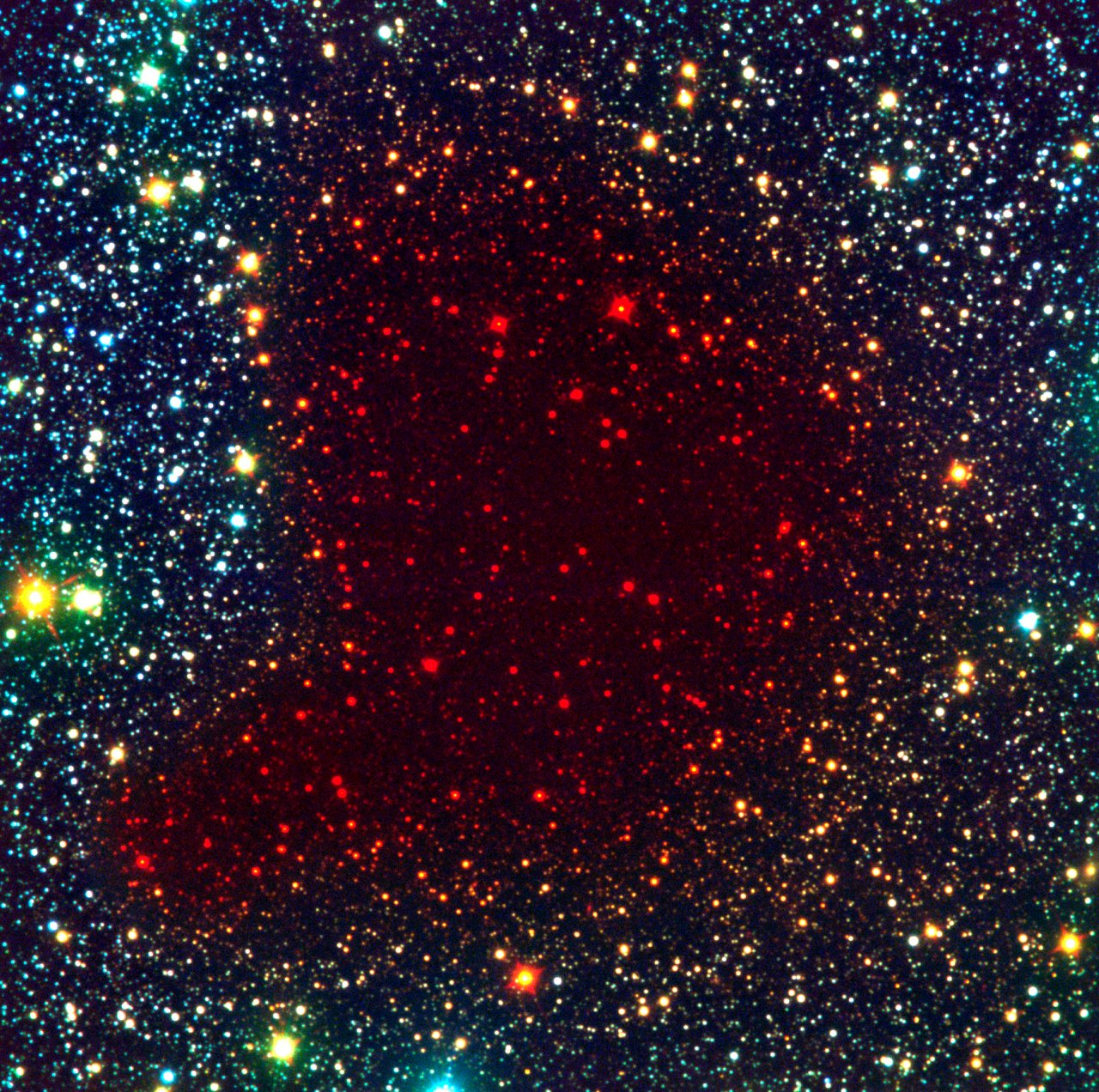Meet Barnard 68, which – if the Internet is to be believed (which it’s not) – is “an empty void in space so big that if you traveled across it you wouldn’t bump into anything for 752,536,988 years”.
While it’s smart not to specify a speed (hey, it’s technically true that if you traveled at a few meters a year you probably wouldn’t bump into anything in 752,536,988 years), this is definitely not the case.

Color composite of visible and near-infrared images of Barnard 68.
What you’re seeing above is a real image of the dark nebula Barnard 68 – which is so close (400 light-years) that nothing can be seen between it and the Sun – taken by the European Southern Observatory’s (ESO) Very Large Telescope in March 1999. However, it is absolutely crammed full of stars, even if you can’t see them when imaging the area using visible light, thanks to the molecular cloud.
As ESO explains, “at these wavelengths, the small cloud is completely opaque because of the obscuring effect of dust particles in its interior.”
If you image it in infrared, here come the stars:

A composite image of Barnard 68. Center, colored in red, shows the area imaged in infrared light.
As IFLScience’s Francesca Benson put it, saying that this is a void in space because you can’t see past the dark nebula is like claiming the Sun does not exist because clouds.
But fans of big weird voids in space, do not despair, for there are plenty of mysteries out there in the endless expanse of the cosmos.
The Great Nothing: an actual void in space
The Boötes Void, often referred to as the Great Nothing or the Great Void, is an actual area of space with fewer galaxies than you’d expect. At 250 to 330 million light-years across, it is one of the largest voids that we know of. To put that in context, that’s about 2 percent of the diameter of the entire observable universe.
The void was first discovered in 1981, in the course of a redshift survey of galaxies. Publishing their results in a paper titled “A million cubic megaparsec void in Boötes?”, astronomers noted that one plausible interpretation of the data they had collected was that the area is “nearly devoid of galaxies”.
Slowly, astronomers began to find galaxies in the region, and by 1997 around 60 galaxies had been confirmed in the Great Nothing in an area that should contain approximately 2,000 galaxies (if space was that uniform). While there is little about the void to suggest our ideas about galaxy formation are incorrect – one possible explanation is that it formed from smaller voids merging – it is still an odd thought experiment to picture how someone inside the void must see the universe.
As astronomer Greg Aldering put it: “If the Milky Way had been in the center of the Boötes void, we wouldn’t have known there were other galaxies until the 1960s.”
An earlier version of this article was published in August 2022.
Source Link: What Is The Boötes Void? The Mysterious Hole In The Universe